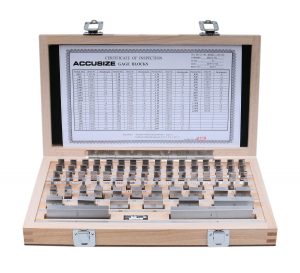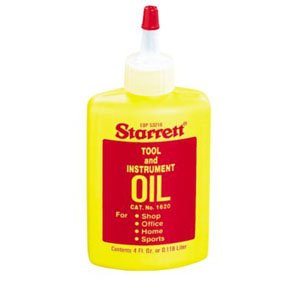Calipers are precision measuring instruments that get used for a large variety of types of measurements. Most can measure outside, inside, depth and step measurements. That’s a wide assortment of things they can check for such an accurate tool.
But the question is how do you know you can trust the measurements you get from your set of calipers?
By calibrating them of course! Luckily, we got a thorough guide to take you through the ins and outs of calibrating your calipers. We included the hows, the whys, the what fors and most importantly, the actual steps you need to take calibrate your calipers.
Keep reading our guide to become a true caliper calibration connoisseur.
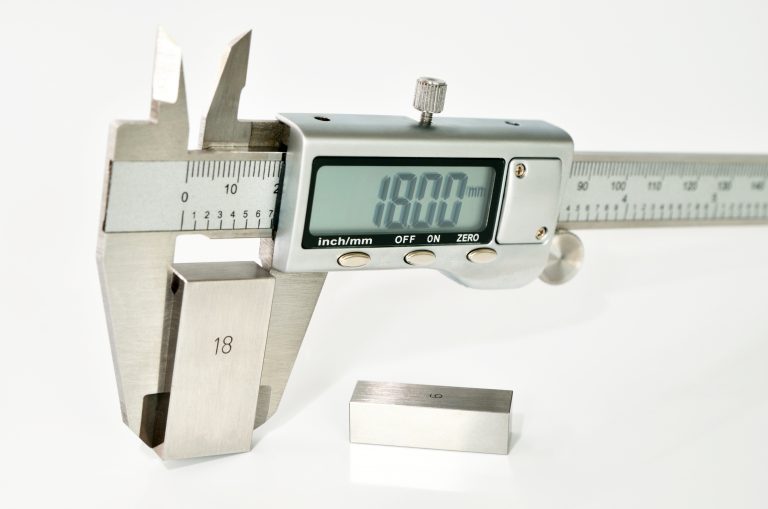
Table of Contents
ToggleWhy do calipers need to be calibrated?
Calipers, including both dial and digital versions, get used for all types of precision measurements from engine work to reloading. It should be easy to see that these aren’t the type of measurements you want to get wrong.
For this reason, it is important to calibrate your calipers and ensure the readings you get are indeed correct. Calibration will allow you to verify that your caliper is accurate for all the measurements it can take and to top it all off, calibration isn’t that difficult. Simply follow our step-by-step guide below.
How often should you calibrate your calipers?
Before we get to the procedure for calibrating your calipers, there are some important factors to consider. The visual below lists some of the most common factors that affect how often you should calibrate your calipers.
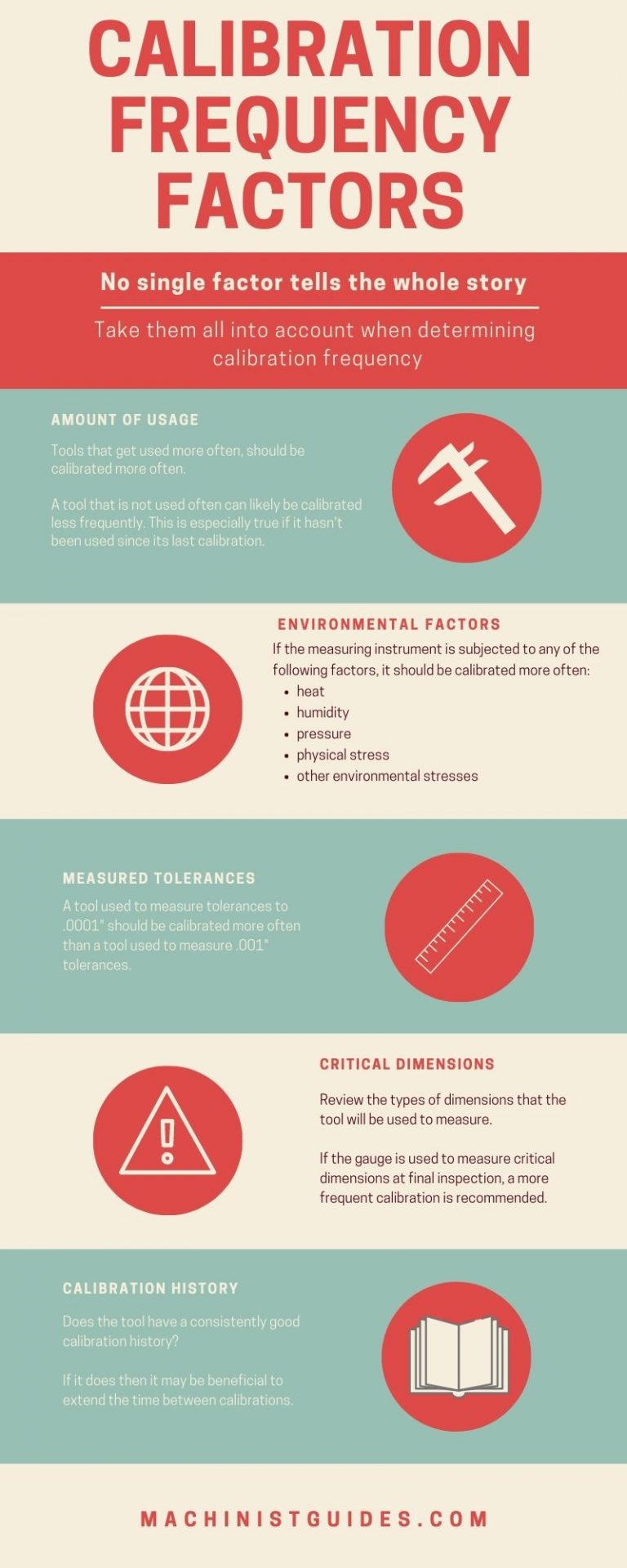
Calipers can be calibrated at many different intervals. When setting the calibration frequency, you should take into account factors such as:
- How the tool will be used? Will the caliper be used to measure critical dimensions?
- How tight are the tolerances it will be used to measure?
- Will it be subjected to stresses such as heat, humidity, pressure, physical stress or other environmental?
- Will it get used often?
- Does it have a calibration history and if so, has it been consistent?
The best practice is to take all of these factors into consideration and set how often you often the tool will be calibrated.
If a caliper is taking important measurements often, the calibration interval will often be 3-4 months or possibly more often. When they don’t get used frequently or the measurements they are used for are less critical, then they can be calibrated once a year or less often.
It all depends on what works for you or your shop. If you are unsure of where to start, calibrate more frequently and then adjust based on usage and how well the tool holds its calibration over time.
What equipment do you need to calibrate your calipers?
Calibrating a set of a calipers requires a known standard such as a set of gauge blocks. This standard gets used to compare the measurement readings
Additional supplies such as gage oil and task wipers will also come in handy but aren’t required.
Choose gauge blocks that are at least four times more accurate than the accuracy of your caliper. This is easy to achieve with your average caliper.
Most calipers are accurate to a thousandth of an inch (“thou”) or 0.001”. This means you need a set of gauge blocks that are accurate to 0.00025” (two and a half tenths).
This 4:1 requirement started with the military specification, or mil spec MIL-STD-45662. This specification defined the calibration requirements for companies.
This requirement is a minimum requirement. Using gauge blocks that are 10 times more accurate than the caliper is even better and common practice in many machine shops.
Do you need to buy a caliper that is already calibrated?
No, there is no need to buy a pre-calibrated caliper. The difference between verifying a caliper is accurate and calibrating it is small. Because you will need to verify the accuracy of the tool when you get it anyways, it is best to take a few extra steps and calibrate the tool.
One reason why pre-calibrated tools are not recommended is shipping companies. Pretty much everyone has had a package destroyed by the delivery service. What can happen is the tool will get calibrated and then shipped to you. In the process of shipping, your precision measuring instrument is dropped, kicked, maybe even dropkicked across the country to your doorstep.
Physical abuse can cause the tools calibration to be affected. For this reason, it is best to check the caliper yourself and know that from the point you received it, it was accurate.
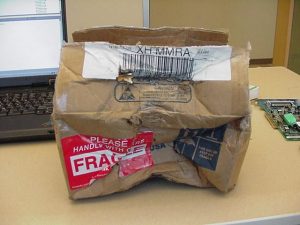
What do you need to maintain for calibration records?
At a minimum, your records should include calibration labels for your tools and a database where you record calibration information.
Your calibration records don’t need to be anything too fancy. Labels or stickers to place on your tool and a place to record the calibration data such as measurement values, dates, tool number, etc. This calibration database can be something as simple as a notecard system or full-blown calibration management software.
If the caliper is for personal use only then you may find that you don’t need the records or labels at all, though it can be handy to have the records for reference even if they only get jotted down into a notebook.
What information should the calibration label include?

Calibration labels should include at least the calibration date along with the next calibration due date. It is also a good idea to include the initials of the person who calibrated the tool and the tool #.
Note: Sometimes it isn’t practical to place a calibration label on the tool itself. If this is the case, it can be acceptable to place the label on the case of the tool. However, when possible, the label should be on the tool.
What information should be included in the calibration database?
The calibration database can come in many forms. Card systems, spreadsheets, database files and specialty programs are often used to maintain calibration records.
The following information should be recorded in the calibration database:
- Who performed the calibration
- Date calibration was performed
- Master standard that was used for calibration (gauge block set #)
- Calibration checks to be performed
- Acceptable limits for calibration checks
- Actual readings from the calibration checks
- Next calibration due date
While it isn’t always a strict requirement, it is a good idea to think about recording the environmental conditions such as temperature and humidity when performing your calibration.
Example calibration procedure for a dial or digital measuring caliper
- Read the entire procedure before beginning calibration
- If at any time in the calibration procedure a problem is identified, the problem will be corrected and the process will start over. If the problem cannot be fixed, the caliper will be taken out of service.
- Check accuracy with gage block(s) having accuracy not less than 0.00025”. Verify measurements at sizes that are not even intervals. Use sizes such as .206”, 1.456” or 4.784”. Avoid common sizes such as .250”, .500” and .800”.
- Close the O.D. jaws and inspect for damage. Hold the calipers to a light source and inspect for light between the jaws. Jaws which are misaligned will not be parallel and create a gap between the jaws which is easily detected with backlighting.
- Verify the zero setting by taking a reading when the O.D. jaws are in the fully closed position. If the caliper does not read 0.000”, zero the calipers.
- Verify the accuracy of the O.D. jaws by checking known standards such as a set of gage blocks at intervals across the entire measuring range. Measuring at 1.000”, 2.000”, etc. is acceptable, but it is preferred to verify measurements at irregular intervals such as .754”, 3.345”, 5.687”, etc.
- Record your readings in the calibration database.
- Repeat steps 3 through 7 for both the I.D. jaws and depth measuring rod if present on your caliper. Instead of checking the O.D. jaws for damage, check the I.D. jaws and the depth measuring rod.
